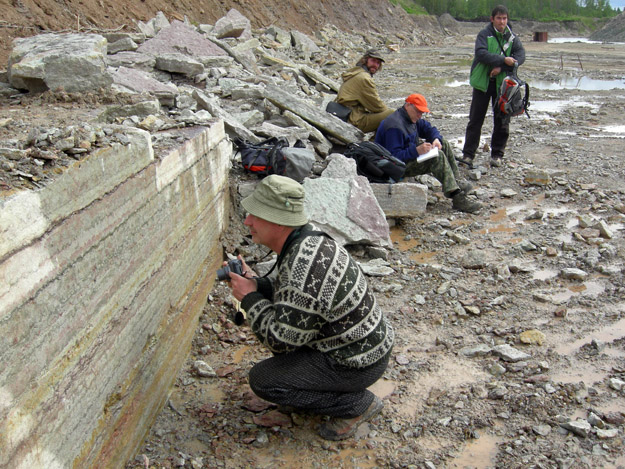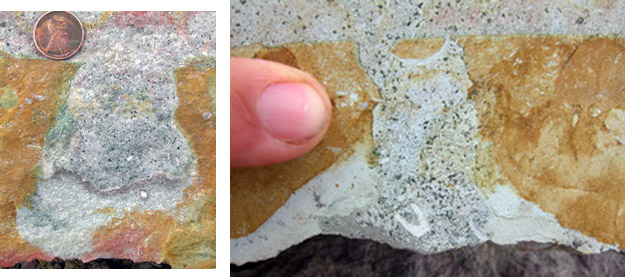BABINO, LENINGRAD REGION, RUSSIA–Today we visited an active quarry, which is a different experience from the riverbank exposures and abandoned quarries we have been frequenting. Quarry mud has a special character — a kind of purified mud, the kind of mud all mud aspires to be. There are also very large trucks splashing by, giant rock saws whining, cranes lifting large blocks, and small groups of curious workmen who want to see what we are doing there with our hammers that now seem so small. Active quarries can produce the very best exposures for geologists, especially those interested in the boundaries between rock units as we are. This quarry at Babino N60.03035°, E32.38613°) is particularly good because they quarry Ordovician limestone by first cutting it vertically, and then lifting the rocks away in sections, revealing smooth surfaces perpendicular to bedding.
I want most to see the boundary between the Lower and Middle Ordovician rocks, and look at the trace fossils above and below it. This boundary — a plane in the rocks which extends across northeastern Russia, Scandinavia, and parts of northern Europe — could not be better displayed than the way we saw it here. It is an erosional surface which has been cemented into a carbonate hardground and then bored (to some extent that we are debating) and abraded smooth. Above it is a significant change in the fossil fauna, a change which can be seen around the world. In no place is this boundary better presented to geologists than here.
The trace fossils along this boundary are complex and may show both boring and burrowing behavior. The distinction depends on when the sediments were soft, firm and cemented, and on the varieties of organisms which did the work.
I can’t take these specimens home for further examination. I’d very much like to make thin-sections (slices of rock shaved down until almost transparent for microscopic analysis) of all the critical intersections, but that will have to wait. Andrey collected many samples he can cut up and share from his lab in Moscow.






Pingback: Wooster Geologists » Blog Archive » A full geological circle